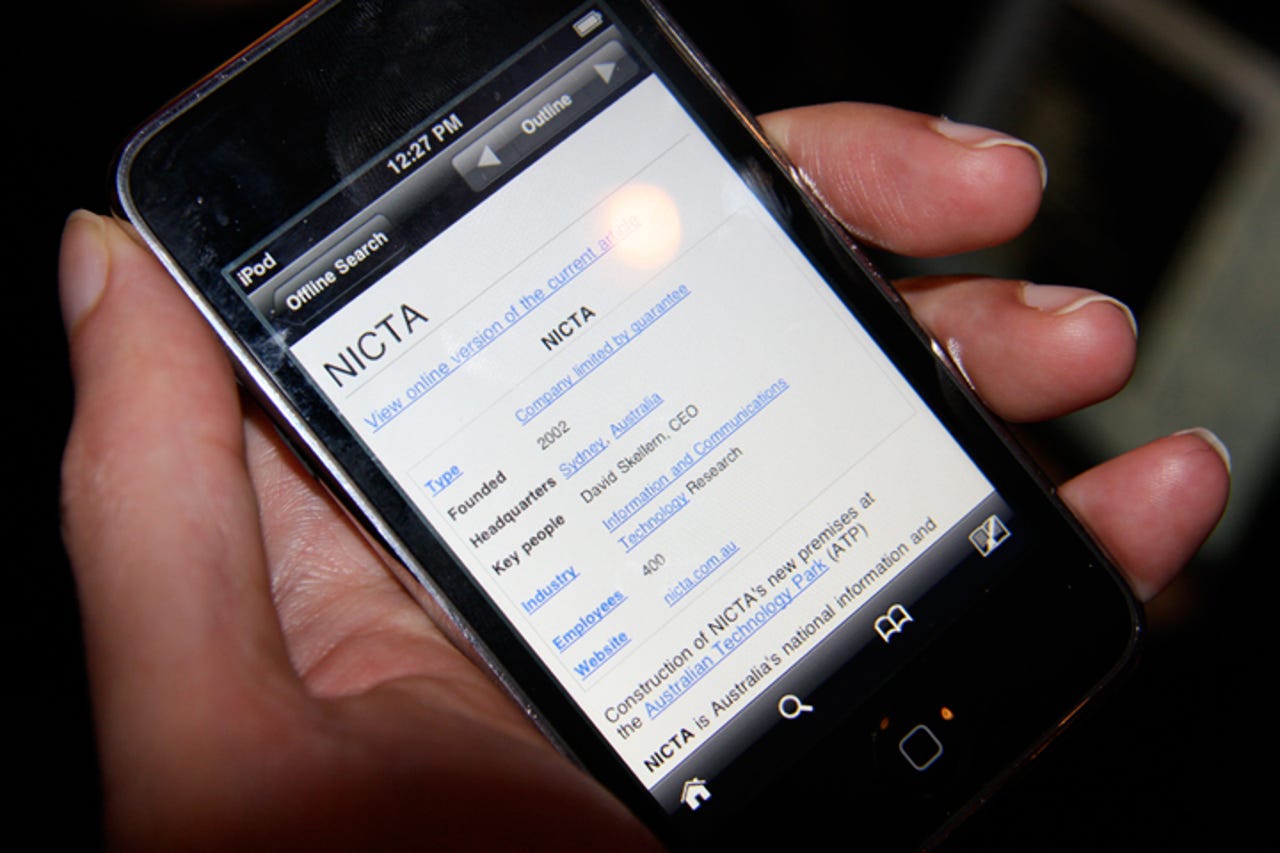NICTA Techfest 09: Photos

The headgear that demonstrates NICTA's bionic eye — the output of which can be seen on the screen on the top right corner. The output is a 32x32 grid with the intensity of each pixel giving depth, ie, closer is brighter.
Here is a demonstration of Gi-Fi, or Gigabit Wireless. The golden triangle is sending a TV signal to the plate at the bottom of the photo, which is in turn appearing on the TV (as seen at the top). NICTA claims Gi-Fi can do in excess of three gigabits per second. Due to the high frequency of the signal produced, it is only intended to be used within a single room, and putting one's hand between the transmitter and receiver can interrupt the signal.
An infrared camera is used for tasks one might not immediately suspect: such as detecting feral animals and being used in food safety. The IR camera is able to detect problems in vegetation before it is visible to the human eye.
An abstract representation of sensors used to monitor bridge health, a deployment that is being tested on one bridge in NSW. Currently, the sensor uses a a 3G connection to report back to a hub, which makes its use in outback areas unlikely at this point. The sensors manage acceleration and strain on the bridge, which is fed back into a model to determine structural integrity.

TiniWiki is available now for iPhones and takes more than 60GB of Wikipedia text (no image or video media) down to less than 6GB in total for offline use. When changes are made to Wikipedia, deltas of changes are sent to TiniWiki so that the information remains current.
A screenshot of an seL4 microkernel instance; seL4 is 7500 lines of mathematically-proven C code. This removes one class of bugs and should make the kernel more secure. NICTA says that seL4 is impervious to buffer overflow attacks; however, mathematics cannot do away with human-injected design bugs.